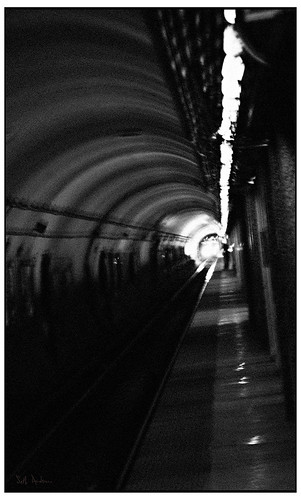The Super Bowl’s half time show is always lame, but of all the spectacles I’ve seen the Black Eyed Peas was by far the worst. They weren’t even good lip syncers, much less musicians, or anything resembling entertainment. My focus group were laughing hysterically at the Black Eyed Peas antics, and not with them, at them. So bland, so mediocre.
And there was not even a chance at a wardrobe malfunction since Fergie seemed to be wearing some sort of breastplate to protect her nipples from destroying the nation.

(Photo by Mike Ehrmann/Getty Images)
The Black Eyed Peas began life a decade and a half ago as a socially conscious, dance-friendly underground hip-hop group and are now the ambassadors for hip-hop to the rest of the world. Their fundamental tenets remain — good cheer, movement, gauche taste — even as they churn out supersize, occasionless songs, at breakneck tempos, designed for maximum impact.
Theirs is music that works harder than the performers, which was a liability during the early part of the set, especially on “Boom Boom Pow,” one of the most limber pop songs in recent years, which the group delivered largely standing still, letting phalanxes of dancers around them do most of the work.
Those clusters of bodies were key. Unlike in previous years, in which fans were allowed on the field to suffocate the stage, this year, there were hundreds of dancers in illuminated unitards helping round out the Black Eyed Peas’ space show. They formed arrows to direct the eye to the stage, and during “Where Is the Love?” formed hearts, lit up red and scattered across the field.
After two songs, Slash was inserted into the setup for a jolt of arena rock, playing a crisp version of “Sweet Child o’ Mine,” dodging Fergie’s vocal and physical histrionics. That was for hip-hop novices, even though the Black Eyed Peas know how to service that audience on their own. They played “The Time (Dirty Bit),” which borrows from “(I’ve Had) The Time of My Life” (the theme from “Dirty Dancing”), and “Pump It,” which samples Dick Dale’s “Misirlou,” popularized in “Pulp Fiction.”
These are the group’s dimmest songs, the ones on which they pander the most. Stiffness aside, “Boom Boom Pow” was better, as was the relentless “I Gotta Feeling,” which opened and closed the set. The show peaked when Usher joined in, performing his hit “OMG,” which will.i.am produced and is featured on. But Usher’s spectacular choreography, including a high leap over a kneeling will.i.am, landing in a split, only highlighted the headliners’ weaknesses.
(click here to continue reading Hip-Hop Comes to the Super Bowl – NYTimes.com.)
At least they didn’t get paid:
In 2010 the group grossed a whopping $81.6 million from touring alone…So it may come as a surprise to learn what The Black Eyed Peas are earning for their halftime show at Super Bowl XLV: Nothing.
That’s right. Fergie, will.i.am, and those other two guys whose names you can never remember (for the record, they’re called Taboo and apl.de.ap) will not be receiving a performance fee for their efforts in Dallas. So why the charity? Because the acts that play Super Bowl halftime shows traditionally don’t get paid. A better question: Why have dozens of other high-profile acts agreed to play the Super Bowl for free?
The simple answer is exposure. At first glance, that sounds preposterous. Turn on any pop radio station and you’ll be hard-pressed to go more than seven minutes without getting the echoey, bass-laden, auto-tuned strains of The Black Eyed Peas firmly implanted in your brain. A remarkable 1.3 million people paid to see the Peas in concert last year alone
(click here to continue reading Why The Black Eyed Peas Aren’t Getting Paid For Their Super Bowl Gig – Zack O’Malley Greenburg – The Beat Report – Forbes.)
Greg Kot writes of the BEP:
The Peas didn’t exactly perform so much as cheerlead, their “Boom Boom Pow” just a centimeter or two removed from “sis-boom-bah.” With lyrics like Madison Avenue slogans plastered over relentless beats, the quartet’s big, proudly superficial music advertised and celebrated itself. It’s not meant to be scrutinized, but blasted over big speakers at Cowboys Stadium or in saloons worldwide hosting Super Bowl parties.
…
Coming in short minute-long bursts, the Peas’ songs actually benefited from the nervous, jump-cut energy of the medley, exiting long before their repetitiveness and trivality could become apparent. Even the second-tier Peas, Taboo and apl.de.ap, inexplicably got some screen time.
and of the National Anthem, as warbled by Christina Aguilera…
The National Anthem, as pole-axed by Xtina: At least Christina Aguilera looked dignified in a black outfit, in contrast to the dressed-down pole-dancer look she favors in concert and video. But after that things went downhill quickly. She bungled some words, leaving out the line, “O’er the ramparts we watched, were so gallantly streaming,” and instead repeating a line from earlier in the song. She stretched the approximately minute-long song to twice its length by making sure to punctuate just about every phrase with an inappropriate growl or melisma. On the first line, she transformed the word “night” into about seven syllables. On the final “brave,” she lingered on for more than 10 seconds before being drowned out, barely, by jet fighters zooming the stadium. As usual, Xtina managed to make even this most revered of songs sound like it was all about her.
(click here to continue reading Turn It Up: Super Bowl halftime review: Black Eyed Peas, plus pre-game music.)
eww.
Footnotes:










